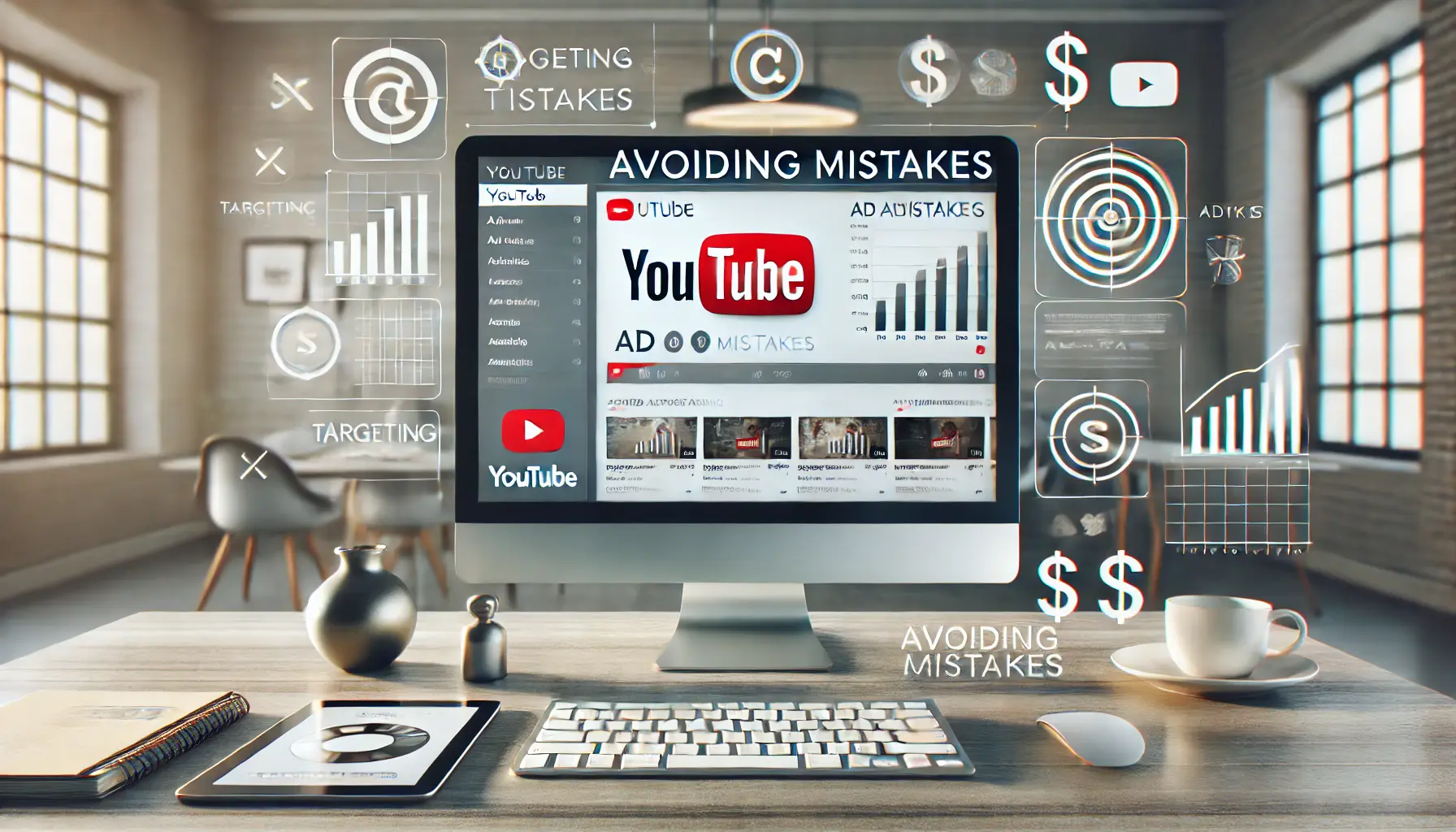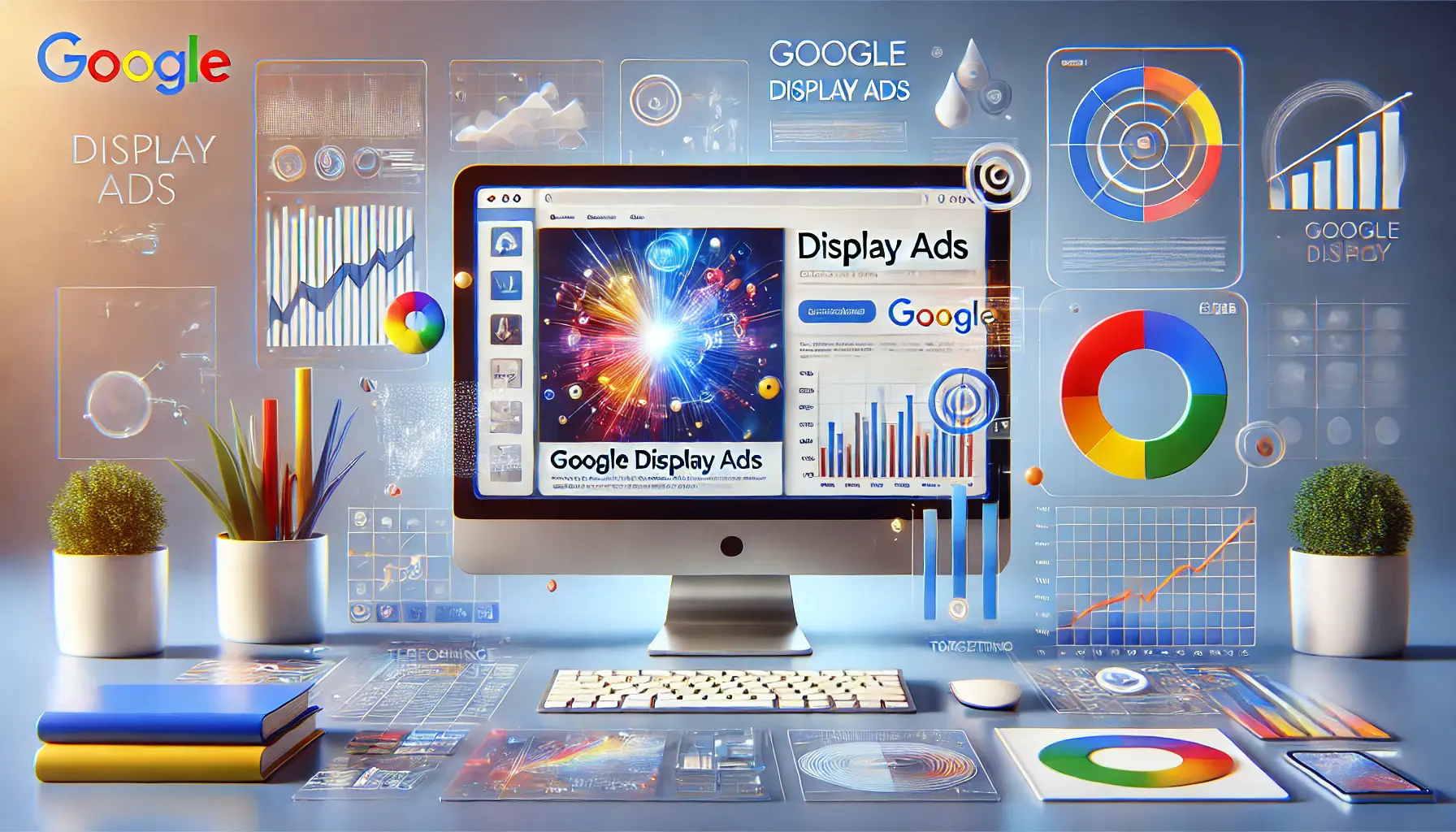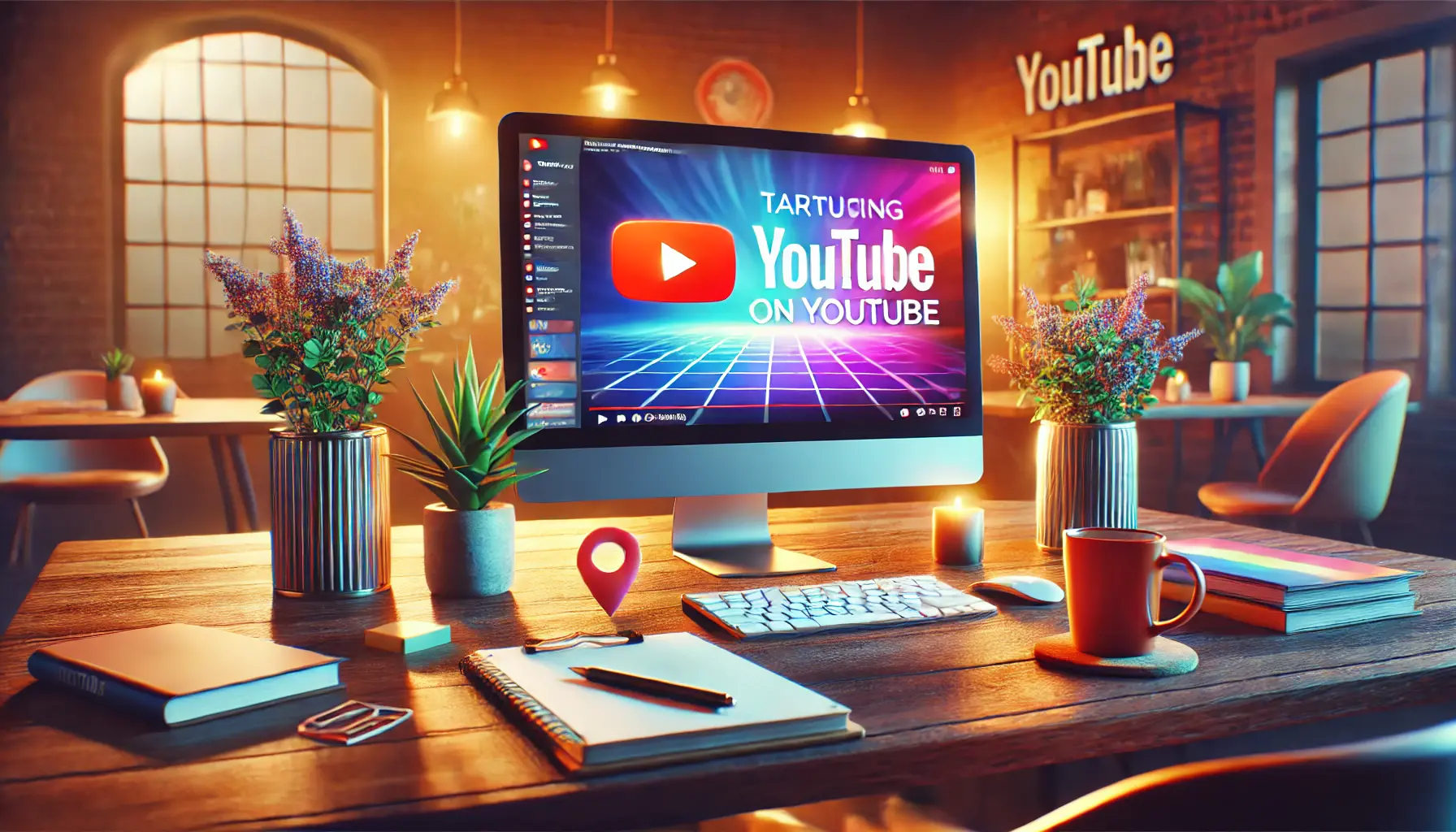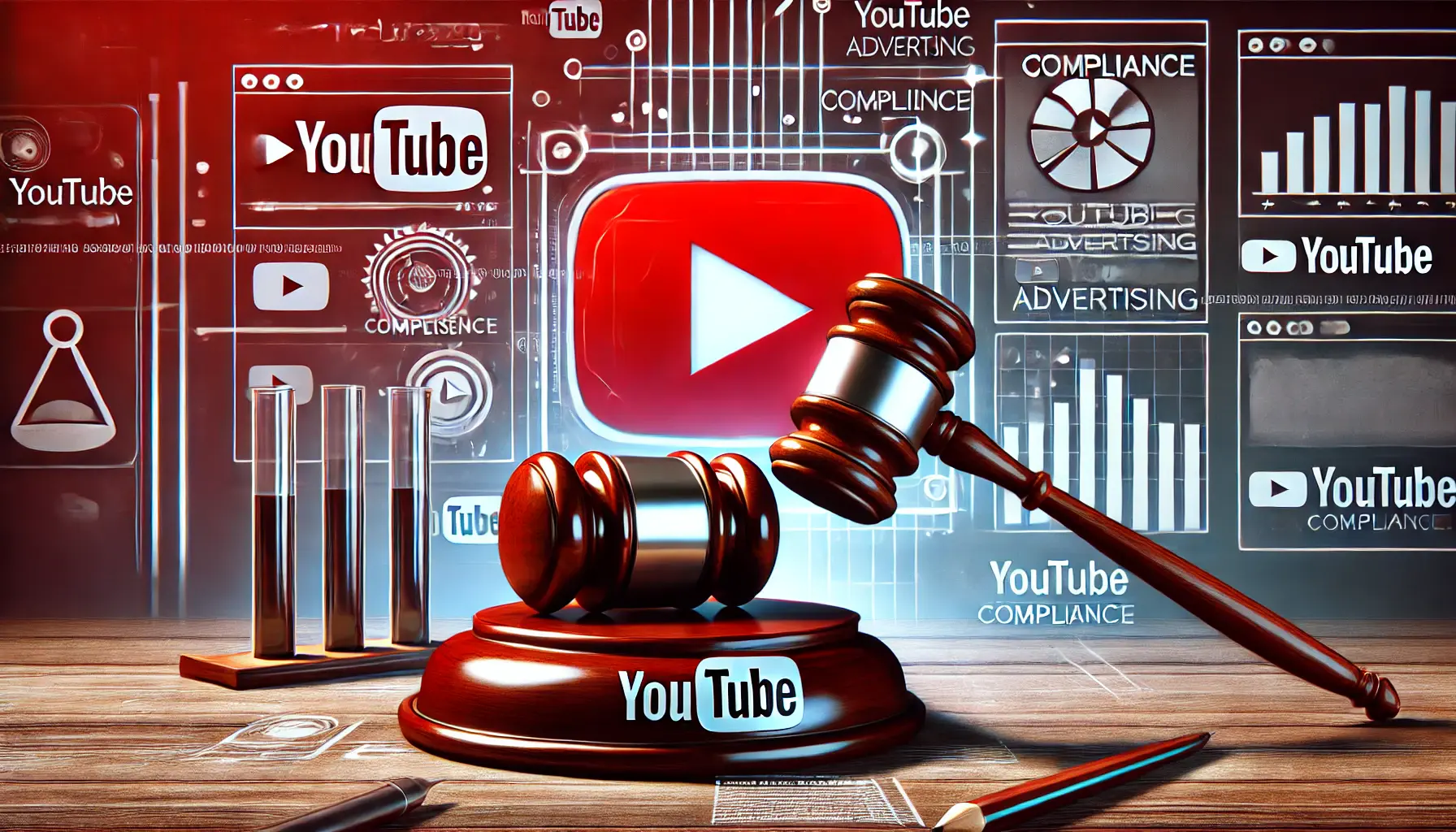YouTube advertising can be one of the most effective ways to grow your business, but as with any platform, common mistakes often stand in the way of true success.
For marketers looking to leverage the powerhouse that is YouTube for their campaigns, it pays to understand some of these pitfalls before diving in.
Many times, advertisers fail to reach their full potential simply because they overlook key aspects of their ad campaigns.
This article will outline the most common YouTube advertising mistakes to avoid, so you can get the most out of your ad campaigns.
By the end, you’ll be better prepared to optimize your YouTube ads for effectiveness and efficiency, positively impacting your return on investment.
Mistake #1: Not Targeting Your Audience Correctly
One of the most critical mistakes you can make in YouTube advertising is completely disregarding audience targeting.
You may think that all you need to do is upload an ad and hit ‘run,’ but without a focused strategy, your message could fall on the wrong ears.
The truth is, YouTube offers a variety of targeting options to reach very specific demographicsStatistical characteristics of a population such as age, gender, and income., interests, and behaviors.
If you aren’t leveraging these options correctly, you’re just burning through your budget.
Why Audience Targeting Matters
Audience targeting is the backbone of any successful advertising campaign.
On YouTube, you are fighting for attention in a crowded space.
After all, millions of videos are uploaded every day.
Without proper targeting, your ad may be shown to users who have absolutely no interest in your product or service, leading to wasted ad spend.
When you target the right audience, your ads are seen by people who are more likely to be interested in your brand.
This increases the likelihood of conversions, which is ultimately what you want.
YouTube allows you to target audiences based on age, gender, location, interests, and even past behaviors related to your content.
By doing this, you can put your message in front of the most relevant viewers, ensuring that your budget is being spent efficiently.
How to Define Your Audience on YouTube
Defining your audience starts with understanding who your ideal customer is.
Ask yourself: Who is most likely to benefit from my product or service?
What are their interests?
What problems are they trying to solve?
Once you have a clear picture of your ideal customer, you can begin fine-tuning your audience targeting using YouTube’s powerful tools.
YouTube offers several targeting options to help you define your audience:
- Demographics: Target users by age, gender, income, or parental status.
- Interests: Reach people who have shown an interest in topics related to your business.
- Custom Intent Audiences: Target people who have recently searched or engaged with content related to your products or services, showing intent to purchase.
By doing this, you ensure that the right individuals see your ad, increasing the chances that they’ll click on it or take the desired action.
Mistake #2: Poor Creative and Ad Content
Good quality and engaging ad content is essential for the success of your YouTube campaigns.
One of the biggest mistakes advertisers make is poor-quality ads or failing to make their ads stand out.
It might seem easy—just upload an ad and call it a day—but here’s the brutal truth: with millions of videos on YouTube, your ad has to be compelling enough to cut through the noise.
If your content doesn’t grab the viewer’s attention, no amount of audience targeting will save your ad from bombing.

Image emphasizing the importance of high-quality creative in YouTube ads.
High-Quality Creative: Why It Matters
Your ad’s creative quality will make all the difference in how well your campaign performs.
A high-quality, engaging ad captures attention fast, which is especially important on YouTube, where users scroll and click away from videos in the blink of an eye.
Most people will skip a video that looks amateurish or doesn’t communicate the message within the first few seconds.
This is why investing time and resources into creative quality is so important.
Make sure your ads are visually appealing, with a message that grabs the viewer’s attention right from the beginning.
Remember, the first 5 seconds of your ad are critical, especially with YouTube’s skippable ad format.
Make those first moments count by immediately introducing the value of your product or service.
If you don’t hook your viewer in that time, they may skip your ad altogether.
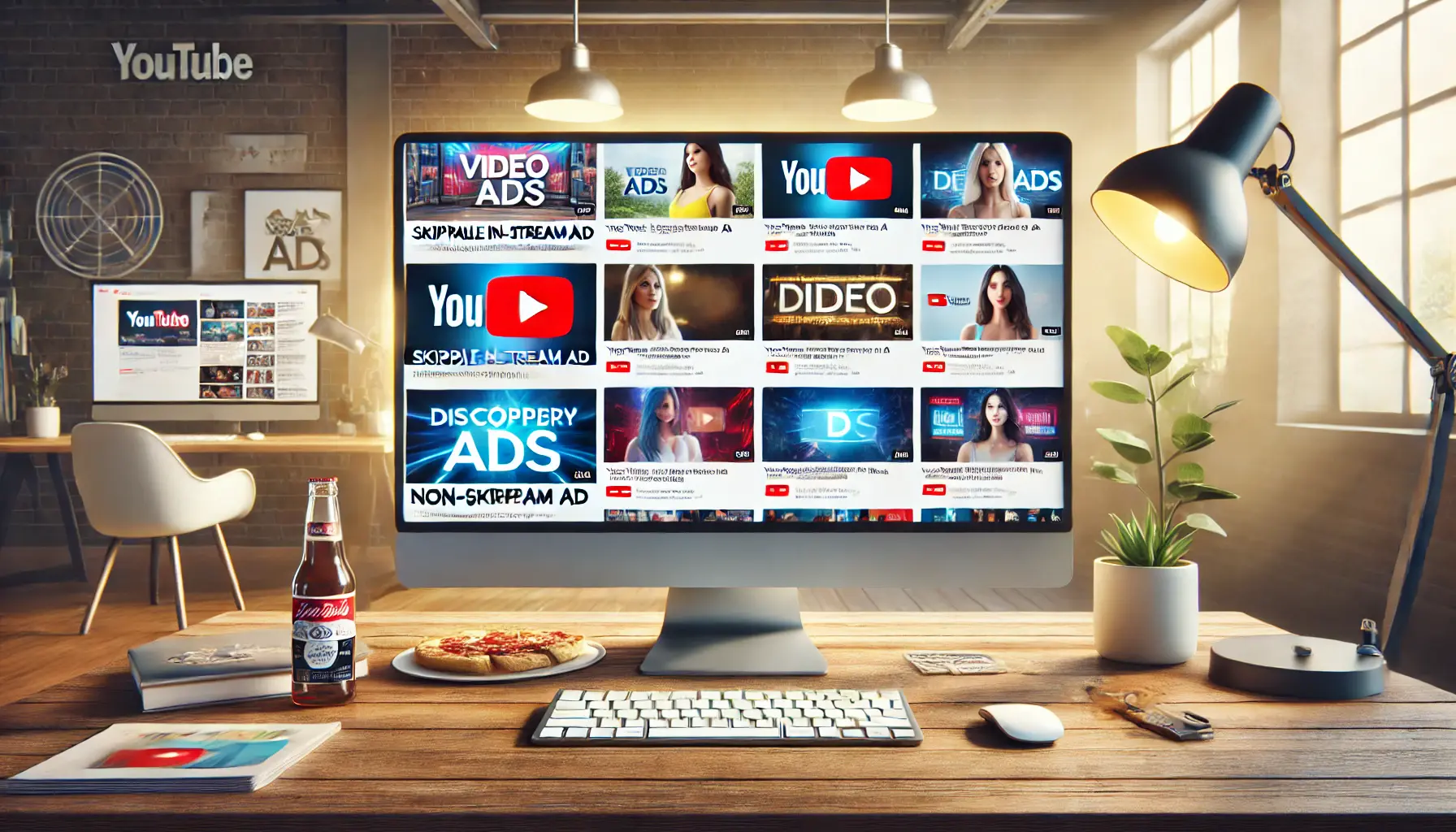
Image highlighting different types of effective YouTube video ads.
Best Performing Types of Video Ads
YouTube offers a variety of video ad formats, each serving a different purpose.
The most common formats include:
- Skippable In-Stream Ads: These allow users to skip the ad after 5 seconds. The key here is to hook the viewer right away, so they don’t skip the ad.
- Non-Skippable In-Stream Ads: These ads must be watched in their entirety. They are usually used for brand awareness campaigns. Since viewers have no option but to watch the full ad, it should be kept under 15 seconds to retain their attention. Non-skippable ads are ideal for delivering a quick, memorable message.
- TrueView Discovery Ads: These ads appear within YouTube search results or alongside related videos. They entice users to click and start watching your content. This format is great for driving more views and engagement.
Each ad format offers unique advantages, depending on the goals of your campaign.
For example, skippable ads are great for campaigns focused on educating or building a deeper connection with your audience.
In contrast, non-skippable ads can work wonders for driving brand awareness in a concise, direct way.
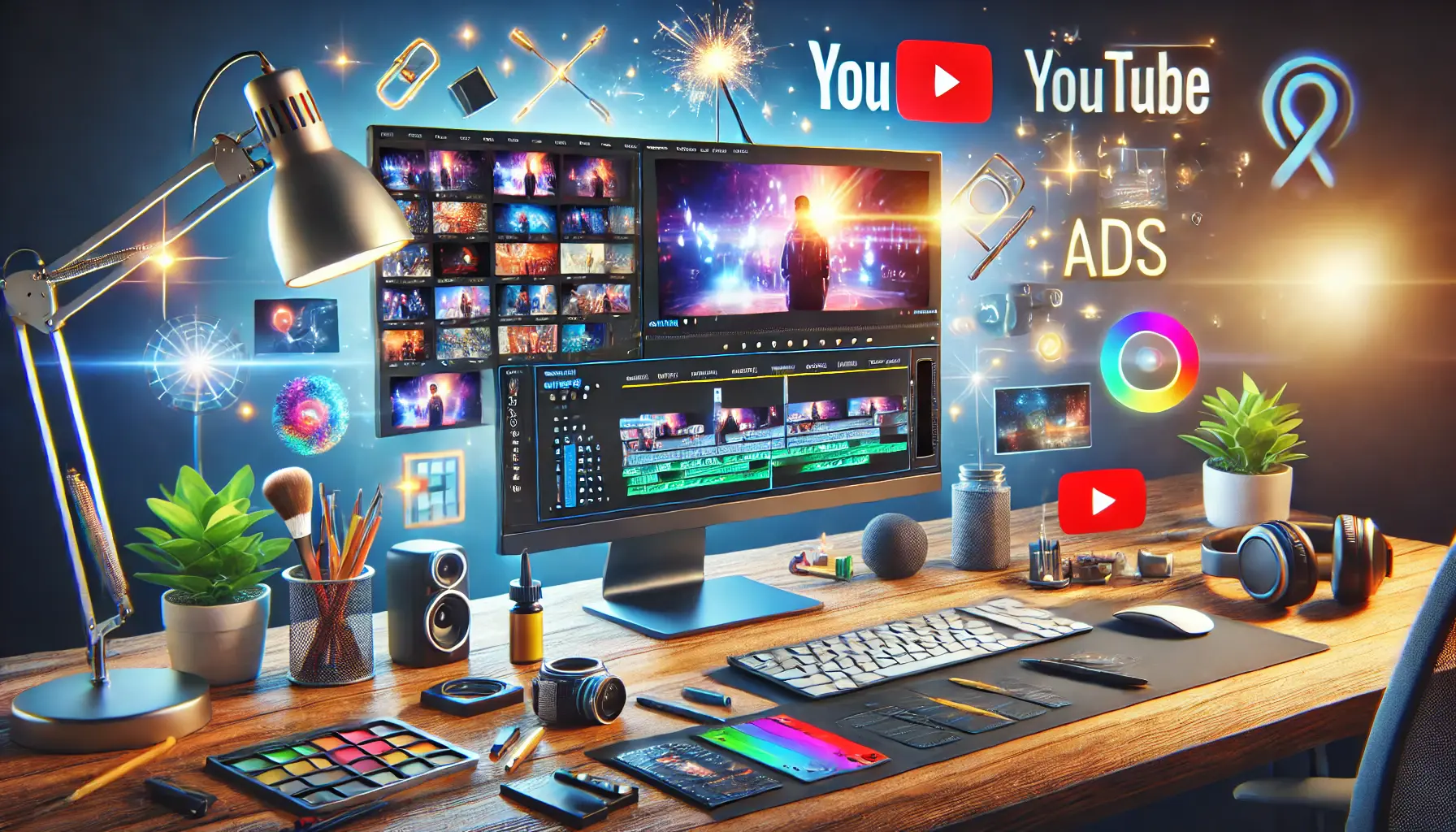
Image demonstrating the process of creating engaging YouTube ads.
How to Create Engaging YouTube Ads
To create ads that resonate with your audience, consider the following tips:
- Focus on the first 5 seconds: Capture attention right away to prevent viewers from skipping your ad.
- Keep it clear and concise: Make sure your message is easy to understand and gets to the point quickly.
- Use high-quality visuals: Ensure your ad is visually appealing and looks professional.
- Include a clear call to action: Tell viewers exactly what you want them to do next, whether it’s visiting your website or subscribing to your channel.
Creating engaging YouTube ads isn’t just about avoiding mistakes; it’s about crafting a message that speaks to your audience in a meaningful way.
Make sure your ads are sharp, targeted, and aligned with the interests of your viewers to maximize their effectiveness.
Mistake #3: Not Optimizing Campaigns
One of the most critical mistakes advertisers on YouTube make is failing to optimize their campaigns regularly.
You might think that once your ad is live, the job is done.
But in reality, campaign optimization is an ongoing process.
Just because your ad is performing well doesn’t mean it’s reaching its full potential.
Without optimization, you’re missing out on opportunities to improve ad performance, reduce wasted spend, and maximize your return on investment.

Image illustrating the importance of continuous optimization in digital advertising.
Why Continuous Optimization is Key
Continuous optimization is crucial because digital advertising is never static.
Audience behavior, trends, and even YouTube’s algorithm can change, meaning that what worked yesterday might not work today.
Optimization ensures your ads remain relevant, reach the right people, and remain cost-effective.
On YouTube, failing to optimize campaigns can lead to over-investment in underperforming ads, and worse, missing opportunities to capitalize on successful ones.
By tracking key metrics and adjusting your strategy based on real-time data, you can ensure that every dollar you spend is working hard for your campaign.

Image showcasing tools and strategies for optimizing digital advertising campaigns.
Campaign Optimization Tools and Strategies
YouTube provides a wealth of tools and features to help you optimize your campaigns effectively.
Below are some of the most important strategies to keep in mind:
- Watch Key Metrics: Regularly monitor key performance indicators (KPIs), including click-through rates (CTR), cost-per-click (CPC), view-through rates (VTR), and conversion rates. These metrics give you a clear picture of your ad’s performance and help pinpoint areas that need improvement.
- A/B Testing: Test different ad creatives, copy, targeting options, and bidding strategies to see what works best. A/B testing allows you to make data-driven decisions and adjust your campaigns in real-time for maximum impact.
- Use YouTube Smart Bidding: YouTube’s automated bidding strategies, like Target CPA (Cost per Acquisition) and Target ROAS (Return on Ad Spend), can help you optimize bids based on campaign performance. These features automatically adjust your bids to improve the chances of achieving your advertising goals.
- Adjust Targeting Based on Performance: If certain audience segments aren’t contributing to conversions, it’s time to adjust your targeting. Exclude demographics that aren’t converting or refine your targeting by focusing on higher-performing segments, such as specific interests or behaviors.

Image depicting tools and strategies for monitoring and improving advertising performance.
How to Monitor and Improve Performance
To get the most out of your YouTube campaigns, constant monitoring and tweaking are essential.
Here’s how you can keep improving…
Mistake #4: Not Optimizing for Mobile
Another significant mistake many advertisers make is failing to optimize their YouTube ads for mobile platforms.
With over 70% of YouTube views coming from mobile devices, it’s clear that your ad could be missing out on a large portion of your target audience if it isn’t mobile-optimized.
If your ad isn’t tailored for mobile, it may not display well, leading to higher skip rates and lower engagement.
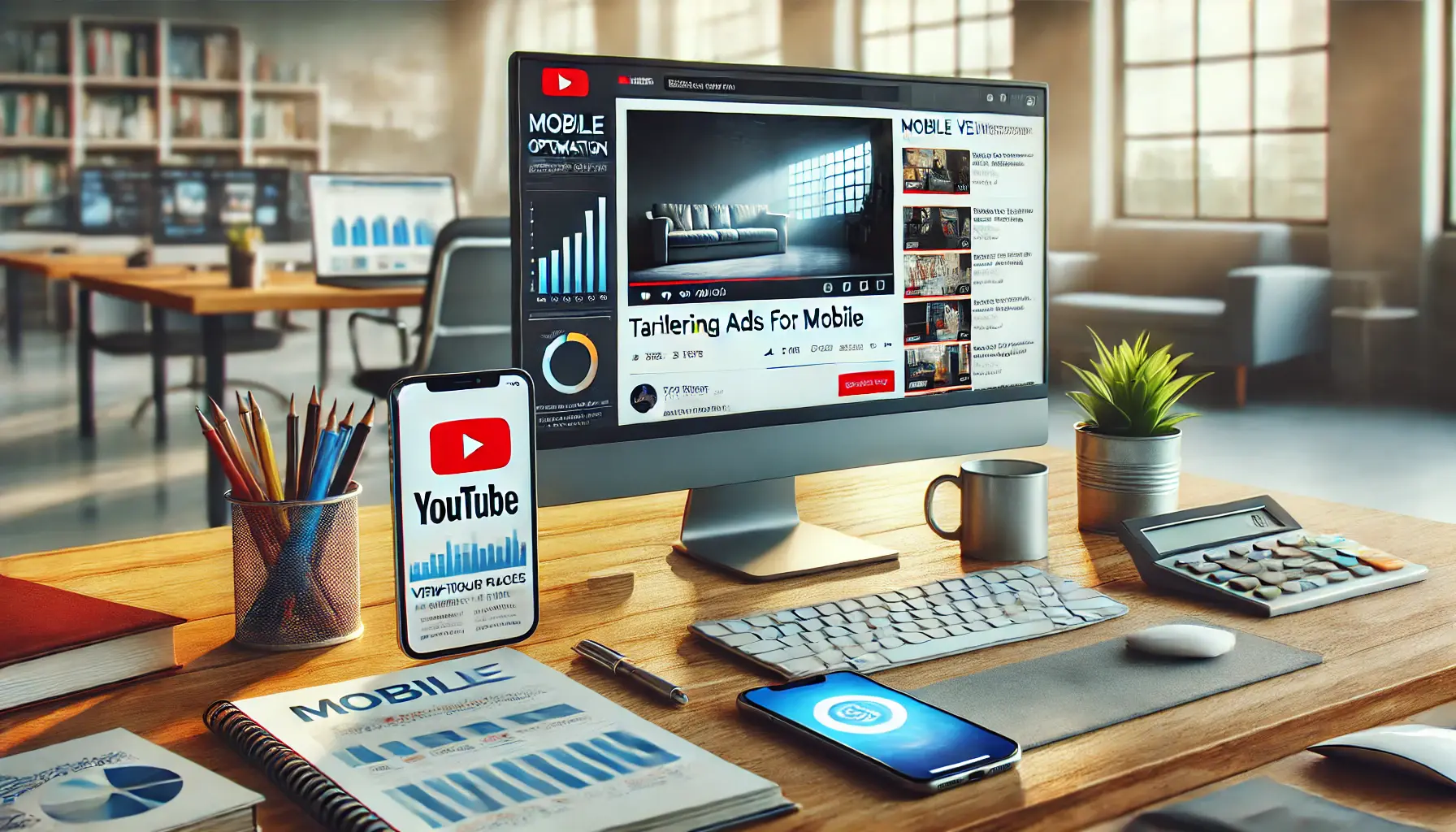
Image emphasizing the importance of mobile optimization in digital advertising.
Why Mobile Optimization is a Must
Mobile optimization isn’t just a nice-to-have; it’s essential.
Mobile users often view videos on the go, with the sound off and in short bursts of time.
If your ads aren’t optimized for these conditions, you risk losing these viewers before your message has a chance to resonate.
When ads are not optimized for mobile, they may appear too small to view properly on smaller screens.
Your message may not be clear, and you’ll likely miss the opportunity to capture attention in the crucial first few seconds.
This could lead to poor click-through rates and low conversions, resulting in wasted advertising spend.
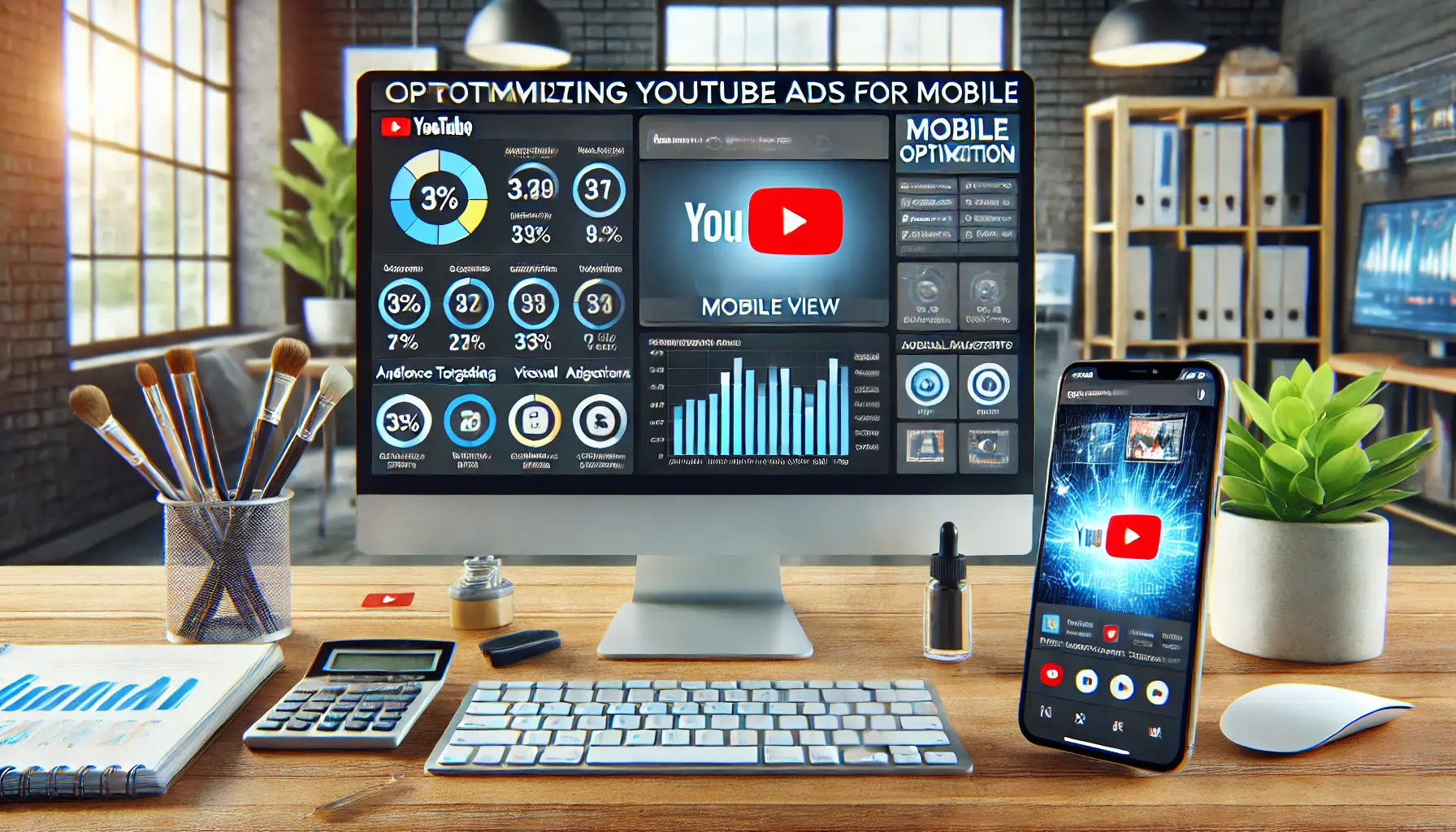
Image illustrating strategies for optimizing YouTube ads for mobile devices.
How to Optimize Your YouTube Ads for Mobile
Luckily, optimizing your YouTube ads for mobile devices is relatively straightforward.
Here are some key tips to help ensure your ads perform well on mobile:
- Keep It Short and Sweet: Mobile viewers have short attention spans, so it’s important to keep your ad concise. Hook your audience with a compelling visual or message within the first few seconds. This is especially important with skippable ads. The quicker you capture attention, the better.
- Use Vertical or Square Videos: Since many mobile users hold their phones vertically, using vertical or square video formats can improve engagement. These formats take up more screen space, making your message stand out and easier to consume.
- Optimize for Sound Off: A large number of mobile users watch videos without sound. To make sure your ad still works, use captions or visual cues to convey your message. On-screen text helps viewers understand the ad even without sound.
- Test Mobile Performance: Regularly monitor how your ads perform on mobile devices. YouTube’s analytics tools allow you to see performance across different devices. If mobile performance is lagging, consider adjusting your strategy.
- Ensure Fast Load Times: Mobile users are often impatient, so it’s important to make sure your video ad loads quickly. Slow loading times may lead viewers to bounce before the ad even starts.
- Crush It on Mobile with Strong Visual Appeal: Since mobile screens are all about visuals, ensure your video is eye-catching and uses high-quality images or footage. The better the visual quality, the more likely your audience will engage with the ad.
By following these mobile optimization strategies, you’ll increase your chances of engaging the growing number of mobile YouTube users and improve your campaign’s overall effectiveness.
Mistake #5: Not Analyzing Data and Insights
Another cardinal yet common mistake in YouTube advertising is failing to analyze data and insights from your campaigns. Without data, which is essentially the lifeblood of any advertising effort, your campaigns are like shooting in the dark. Analyzing performance data gives you clear insights into what works and what doesn’t, enabling you to optimize your campaigns for better results. Unfortunately, many advertisers overlook this vital step, missing out on opportunities for improved ROI and campaign efficiency.

Image highlighting the critical role of data analysis in digital advertising.
Why Data Analysis Is Crucial
Data analysis is the key to understanding how your YouTube ads are performing.
Without looking at key metrics and insights, you won’t know whether your ads are reaching the right audience, if they’re engaging viewers, or if your budget is being spent wisely.
By analyzing key performance indicators (KPIs) such as click-through rates (CTRClick-through rate, the ratio of users who click on a link to the number of total users who view it.), view-through rates (VTRView-through rate, the percentage of people who view your ad after seeing it.), conversion rates, and cost-per-click (CPCCost per Click, the price paid each time someone clicks on your ad.), you’ll be able to spot patterns and trends that help optimize your campaigns over time.
Constantly reassessing your data allows you to make informed decisions on what part of your campaign needs to be adjusted—whether it’s the creative, targeting, bidding strategy, or even the campaign goals themselves.Without this data-driven approach, you risk ad fatigue, wasted spend, and lower engagement rates, which can negatively impact your overall campaign performance.

Image showcasing strategies for effective data analysis and utilization in digital advertising.
How to Effectively Analyze and Utilize Your Data
Here’s how you can analyze and use the data to enhance your YouTube ad campaigns:
- Use YouTube Analytics: YouTube provides a comprehensive analytics dashboard that gives you a detailed look into how your ads are performing. You can track important metrics such as watch time, audience demographics, engagement levels, and more. This data acts as a guide, helping you identify areas for improvement and better understand how your audience is interacting with your content.
- Track Key Performance Indicators (KPIs): Monitoring crucial KPIs such as CTR, conversion rate, CPC, and VTR will give you a clearer picture of how well your campaigns are performing. These indicators highlight areas where your campaigns are excelling and where adjustments are needed to drive better results.
- Leverage Google Ads Reports: Since YouTube ads are primarily run through Google Ads, you can make full use of the detailed reports available in your Google Ads account. These reports provide valuable insights into ad spend, keyword performance, and audience targeting. By analyzing this data, you can refine your targeting and adjust your bidding strategy to improve campaign performance.
- Run A/B Testing: A/B testing is one of the most effective ways to optimize your YouTube ad campaigns. By testing different elements of your ads—such as headlines, visuals, and call-to-action (CTA) buttons—you can identify which version performs best with your audience. This allows you to make data-driven decisions that help maximize ad performance.
- Adjust Campaigns Based on Data: Don’t wait until the end of your campaign to assess its performance. Make adjustments as needed based on the real-time data you collect. For example, if certain audience segments are underperforming, you can exclude them or adjust your targeting to focus on higher-performing segments.
Analyzing your campaign data regularly is essential for ensuring continuous improvement and getting the most out of your YouTube advertising budget.
By staying proactive and using the insights at your disposal, you’ll be able to refine your ads and increase your chances of achieving campaign success.
Audience targeting ensures your ads reach the right people, saving budget and improving conversion rates.
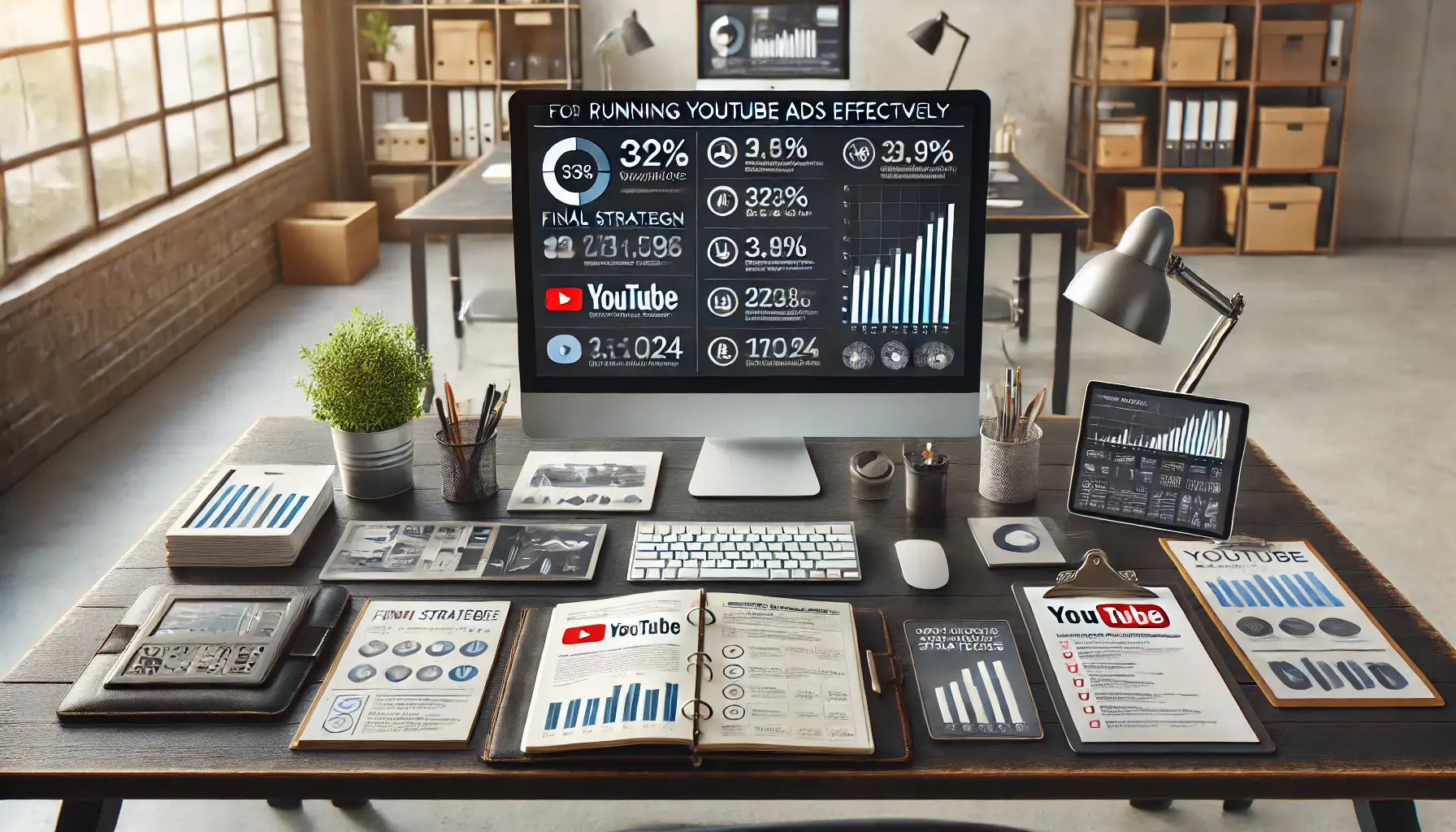
Image summarizing effective strategies to avoid common mistakes in YouTube advertising.
Conclusion: How to Avoid Common Mistakes for Running Successful YouTube Ads
Avoiding the most common mistakes in YouTube advertising can significantly improve the efficiency of your ad campaigns and help you achieve better results.
By focusing on key areas like targeting, creative quality, optimization, mobile compatibility, and data analysis, you’ll be able to maximize ad performance and ensure that every dollar spent on advertising counts.
Keep in mind that YouTube is an ever-changing platform with an extensive audience, and success will only come to advertisers who continue to optimize their campaigns and avoid these pitfalls.
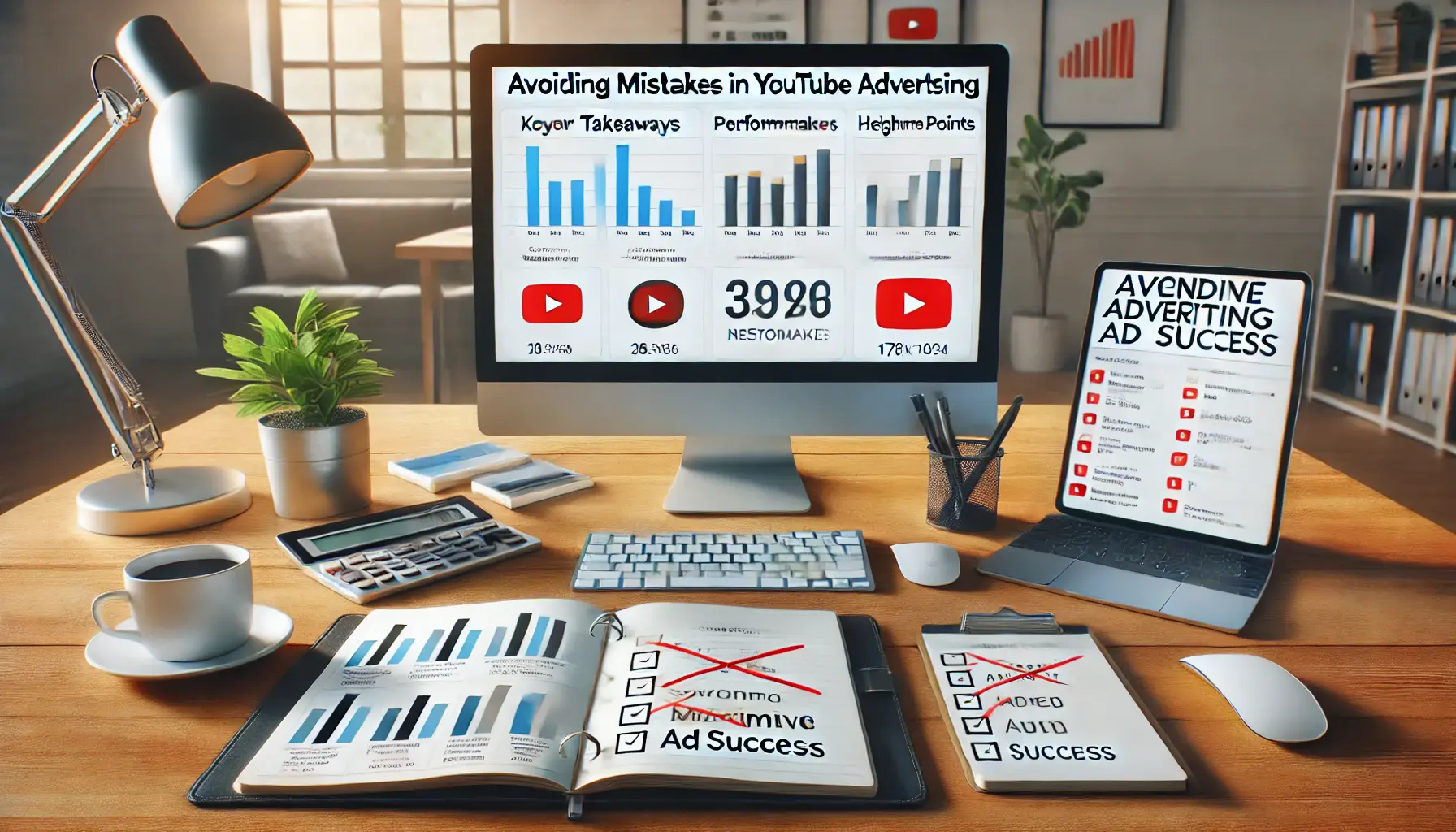
Image illustrating essential strategies to avoid mistakes in YouTube advertising.
Key Takeaways to Avoid YouTube Advertising Mistakes
Here are the main steps you must follow to avoid the common mistakes in YouTube advertising:
- Targeting the Right Audience: YouTube offers targeting tools that help ensure your ads reach the most relevant audience. This will minimize wasted ad spend and improve conversions.
- Investing in Quality Creative: To stand out, your ads must be compelling and attention-grabbing, particularly in the first few seconds. High-quality visuals and messaging are key to engaging your audience.
- Regular Optimization: Continuously monitor and adjust your campaigns based on performance data to maximize ROI and avoid overspending. Regular optimization ensures your ads stay effective and relevant.
- Mobile Optimization: Given that most YouTube views come from mobile devices, make sure your ads are mobile-friendly. Failing to do so may result in poorer engagement and higher skip rates.
- Data Analysis: Use YouTube and Google Ads analytics to track your ad performance and refine your strategy. Data-driven decisions are essential for ongoing success.
By avoiding these critical mistakes and applying the best practices, you’ll be able to create YouTube advertising campaigns that generate high returns and effectively engage your audience.
Start implementing these strategies today to maximize your YouTube ads and propel your business forward.
Focusing on targeting, creative quality, optimization, mobile compatibility, and data analysis can maximize YouTube ad performance.

Image depicting a Q&A setting for commonly asked questions on YouTube advertising.
Your campaigns can be managed by an agency specialized in Google Ads, check out our service page.
Commonly Asked Questions About YouTube Advertising
Here’s a list of some frequently asked questions about YouTube advertising, and their answers.
These FAQs will help you understand key points necessary for running effective YouTube ad campaigns.
Audience targeting ensures your ads reach the right viewers.
Without that, your message may fall on uninterested eyes and waste ad dollars in the process, culminating in lower conversion rates.
Top-performing YouTube ad creatives are effective at being engaging, attractive, and communicating their message quickly.
The first few seconds in an ad are crucial to capture viewers’ attention and prevent them from skipping.
Channels should regularly optimize their YouTube campaigns for better performance.
This might include keeping a regular tab on the key metrics, such as CTR and Conversion rate, and changing the targeting or creatives accordingly.
It’s necessary to ensure that your ads are mobile-optimized, considering the fact that most YouTube views are cellularly generated.
Mobile-friendly ads engage viewers better and prevent issues like higher skip rates or poor visibility.
Track key metrics like click-through rate (CTR), conversion rate, view-through rate (VTR), and cost-per-click (CPC).
These data points help assess your ad performance and guide optimization decisions.
On YouTube Analytics, you can track such performance metrics as audience demographics, watch timeThe total time viewers have spent watching your video content., and engagement.
These will give you informed insights for refining your ad strategy.
Skippable in-stream ads are video ads whereby users can skip the ad after five seconds.
These ads are ideal for educating or building deeper connections with the audience, but the first five seconds are crucial.
